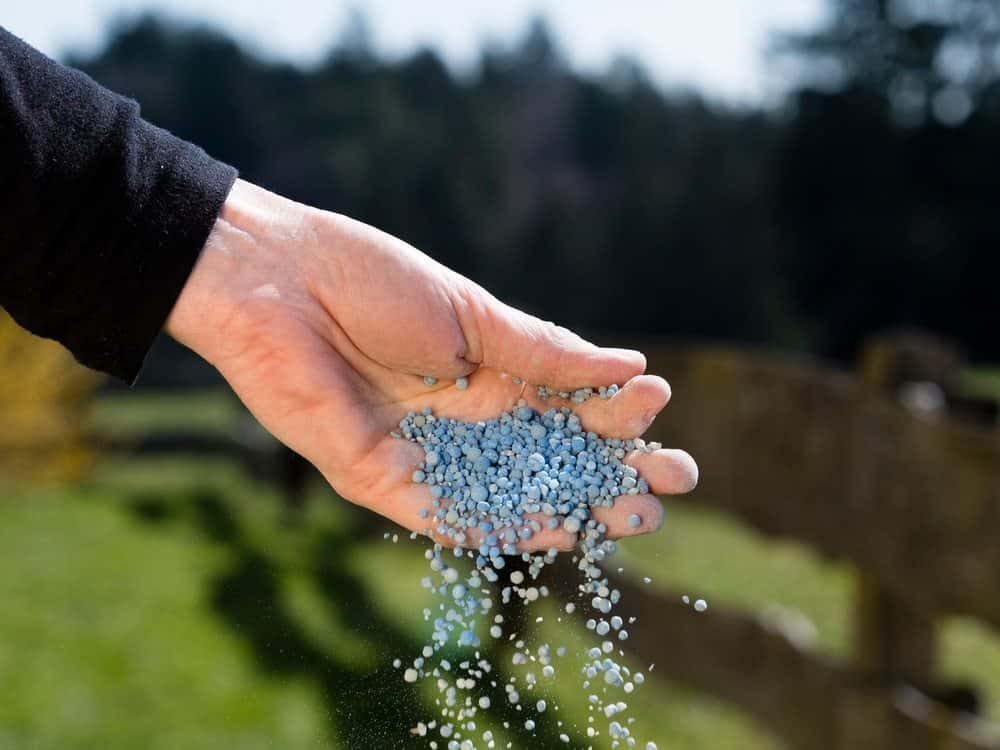It’s finally happened, you have a gorgeous new lawn from a quality turf supplier like Sunshine Coast Turf. As you lie back and relax, one thing is bugging you – how can you keep it looking so good?
The answer of course is regular care. This article will talk you through when to fertilise your new turf, as well as what to use.

When can I fertilise my new turf?
To keep your lawn in tip-top condition, we recommend you apply your first fertiliser around two weeks after installation. This will help boost root growth and get your lawn off to the great start it needs to look good for years to come.
After this initial feed, we recommend you fertilise every 6-8 weeks throughout the year. If this feels unrealistic, because of time constraints or other practicalities, we recommend a feed at the start of each new season.
It’s important to avoid applying fertiliser in very hot weather to avoid scorching, which makes the early morning a great time to apply lawn fertiliser. Remember to water your fertiliser in well too.
Why fertilising is important
Great turf can only last so long without a helping hand. Fertilising helps to keep your lawn strong, which means it can fight off pests and diseases more effectively. Applying a combination of slow release and organic fertiliser in autumn and spring means your lawn can keep its good looks throughout winter and have enough energy for the growth spurts of spring.
What is in fertiliser?
Chemical or synthetic fertilisers contain blends of the following elements: nitrogen, phosphorous, potassium, zinc, calcium, sulphur, magnesium, boron, copper and iron. They are supplied in liquid, pellet, granular or powder forms and often need to be diluted before application.
Organic fertilisers contain substances that are already part of the natural world. The main benefit of using organic fertiliser is that there is less risk of damaging or burning the lawn than with chemical fertilisers. The downside is that you often need more of the product to cover the same area, which can be more expensive. Organic fertilisers have a positive impact on the structure of the soil and fewer negative impacts on the environment, so there’s less harm to groundwater or other plant life. Organic fertilisers include things like bat guano; compost from plants, animals, minerals and seaweeds, peat moss, wood ash and manure.
If you choose to use organic fertiliser, you’ll need to keep an eye on the pH of your soil by testing at regular intervals.
Which fertiliser to choose
Any garden supplier or hardware store offers a somewhat bewildering display of formulations, brands, and application methods. To ensure you get the right one, you need to:
1. Find out your soil type
2. Find out your soil pH
3. Consider whether you prefer organic or inorganic fertiliser
4. Consider the type of application you prefer – pellet, liquid, granular or powder. The main difference is the amount of watering in that’s needed and the amount of product that is required for each application.
Find out more
At Sunshine Coast Turf, we’ve been growing and installing turf across the Sunshine Coast since 1995. Our business has expanded so much that we now grow turf on three farms: Palmview, Glenview and Chevallum. We have extensive local knowledge and understanding of Sunshine Coast soil which means we can offer expert guidance on the best type of turf, and the best type of care, including when to fertilise your new lawn.
To find out more, just get in touch using our contact form or give us a call on 0408 193 362.